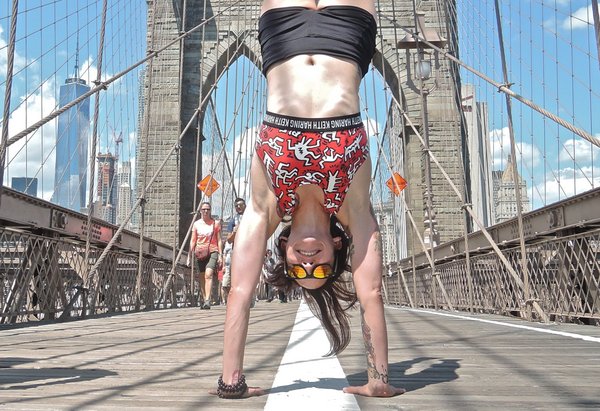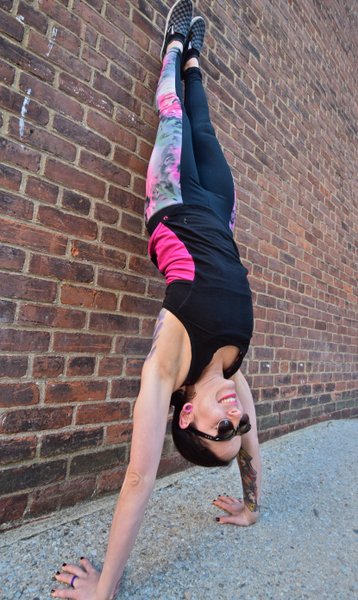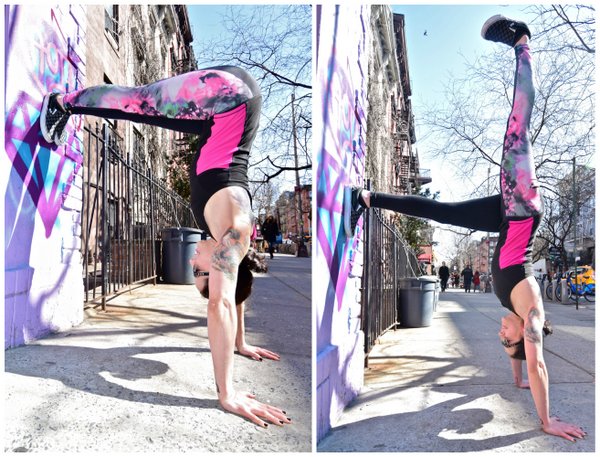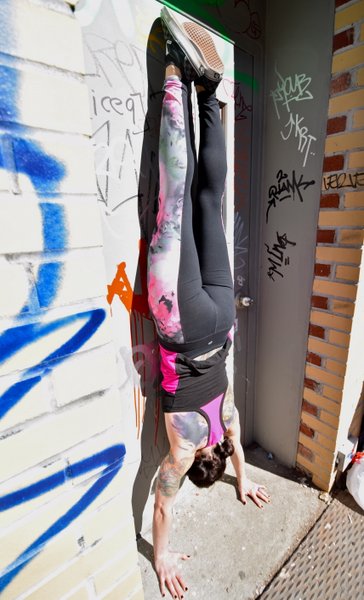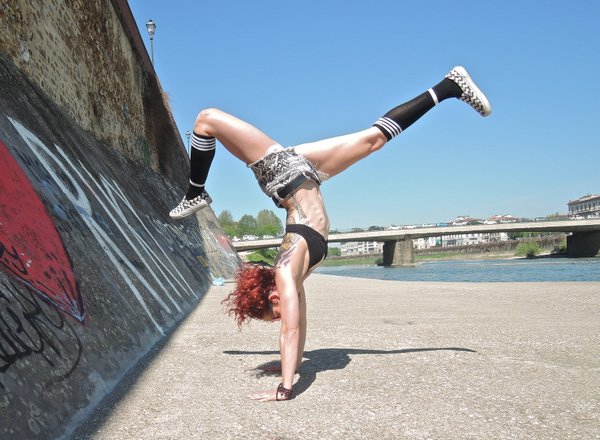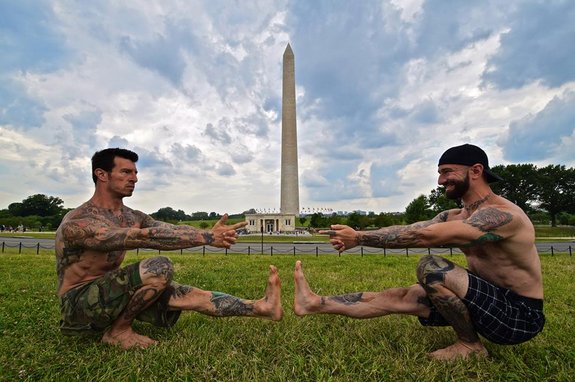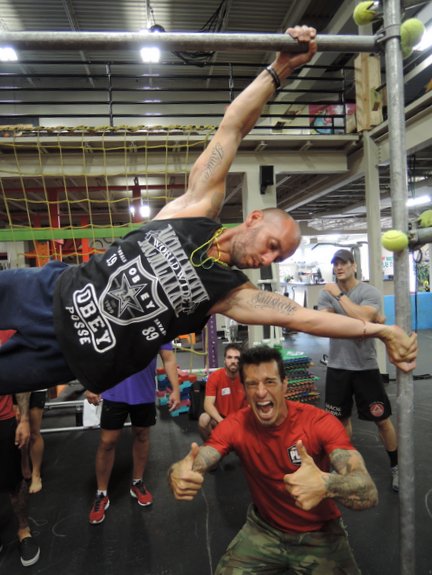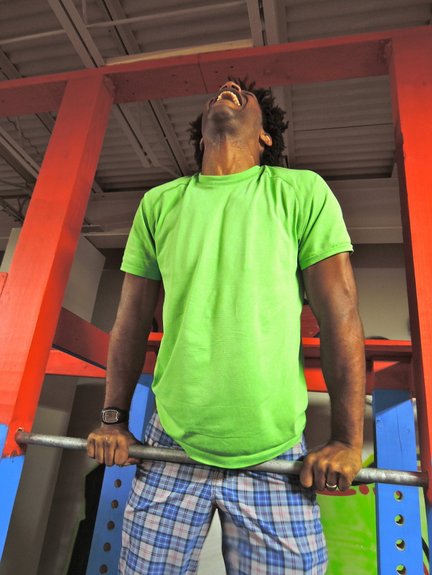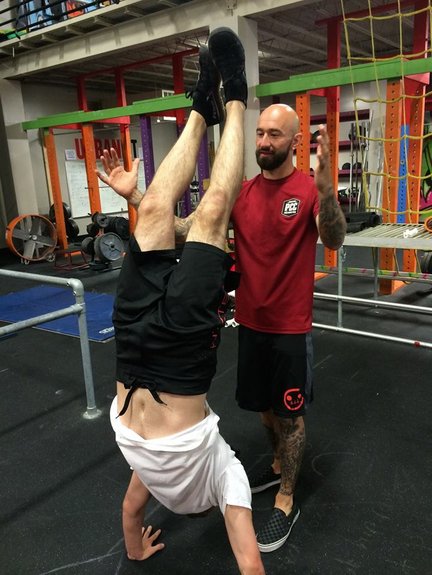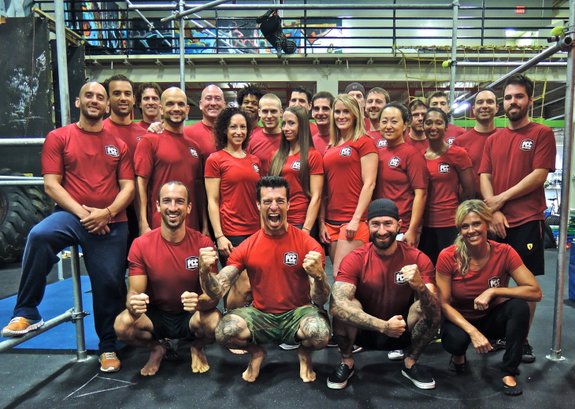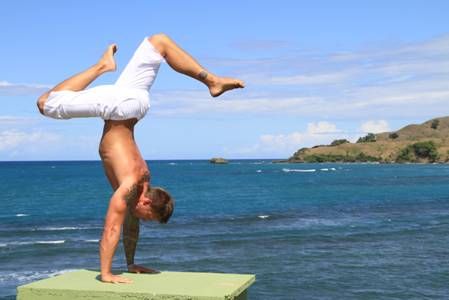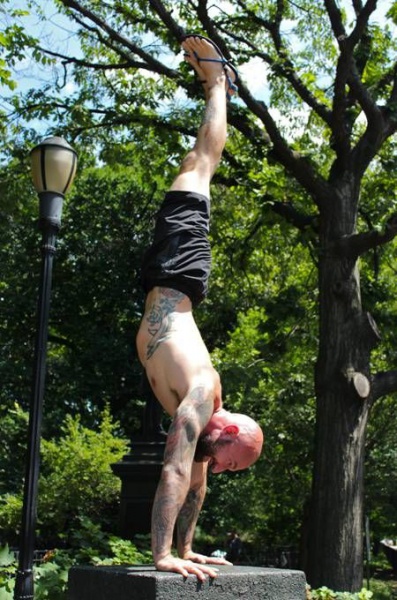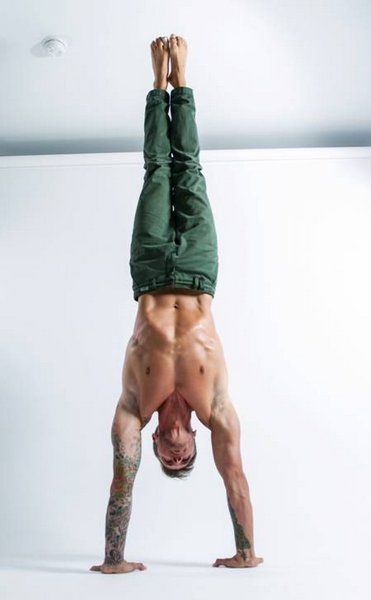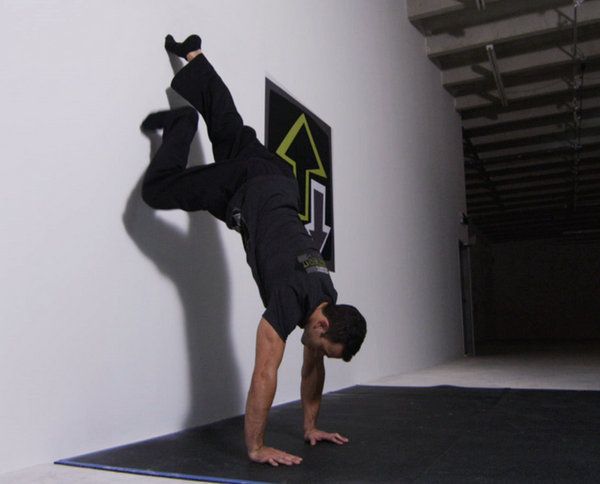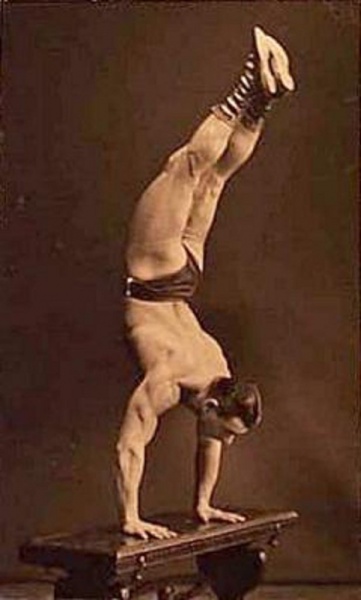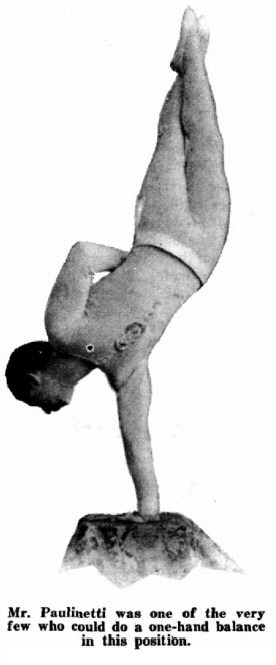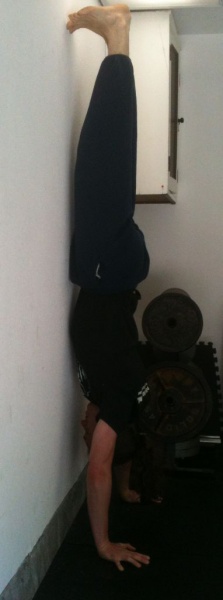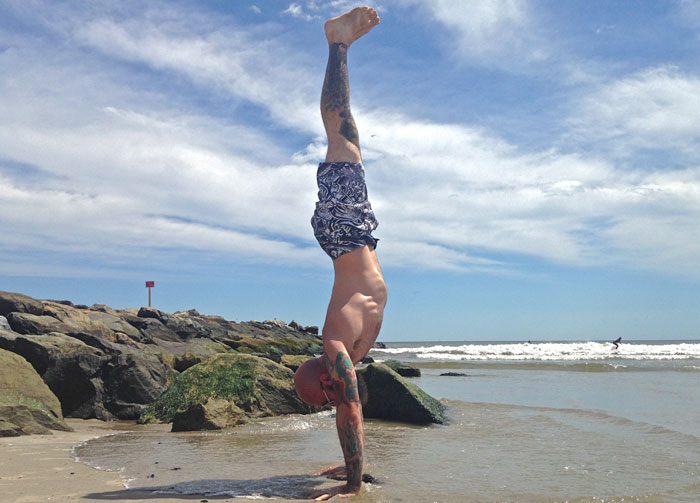
As an adult you’ve decided to embark on an inversion and hand balancing journey. Seriously, are you crazy?
If you think about it, children with amazing mobility, breathing, reflexive stability and perfect natural movement still can take 18 months to learn how to stand on their feet. And you have decided that you want to balance on your hands! Are you out of your mind?
Read ahead, because I am too.
At 40 something years of age, 6 foot 3 inches and 90 kilograms (hardly genetically blessed to do anything in the calisthenics or gymnastics arena), I decided to do the same thing. Yep, I looked at what someone else was doing, and said to myself, “that looks like fun, if they can do it, I can.” That was on my first Progressive Calisthenics Certification or PCC in the US back in 2013 with the infectious spirit and great vibes of Al and Danny Kavadlo. I was hooked.
But little did I know of the journey I had decided to undertake.
Unlike a lot of other adults who embark on achieving the freestanding handstand, I wasn’t exposed to gymnastics as a kid, nor did I have friends into gymnastics. I also wasn’t a kid that spent time cartwheeling with my mates in the park. So let’s just say inversions and hand balancing were completely foreign to me until I started playing around with my first crow pose at the PCC in 2013.
Zip, zero, nothing, nada.
What do I love about the handstand? Everything gets better from learning how to handstand.
Whilst nailing your freestanding handstand may be the long term goal (and it’s so sweet when you finally get there!), the journey is where the real gold is. Improved strength and mobility in the hands, wrists, shoulders and thoracic spine, as well as improved proprioception are just some of the physical attributes developed.
The mental aspects however, were more surprising to me. Overcoming my fears of falling, being upside down or simply self-preservation were surprising, considering my background as an Expert Level 2 Krav Maga instructor and Muay Thai coach. I think I was more comfortable being punched in the head rather than landing on it. It also taught me how impatient I was, and a lot about perseverance and persistence. Some days you will feel great and find your balance without much trouble. Other days, it just won’t be there. The handstand can be an elusive beast. The handstand was a reminder to me about attitude, and how just turning up and doing the work is where it’s at.
Though I could write further about my journey, what’s more important is that I have been successful in helping others, some in their forties as well, achieve their first handstands in a relatively short time. Repeatable, expedited results with others as a coach, is what I endeavor to achieve
So here are 5 tips that will help you fast track your way to your first freestanding handstand.
1. Volume: Do the work
It maybe not what you want to read, but you have to do the work. Regardless of the discipline – calisthenics, circus, yoga or gymnastics, the best hand balancers do it most days of the week. Hand balancing is a very specialized skill. Regardless of my time spent with the Kavadlos on my handstand journey or engrossing myself in material from other experts in the field, they all advocate the same thing: volume. Many serious advocates will say to practice 5 days a week, though I’ve found that following a structured program just 3 days per week for an hour had a few of my students hitting their freestanding handstands in just 6 months with no prior experience. Repetition is your teacher. Even if it’s just cranking out a crow pose on the office floor for a few minutes, or the kitchen bench a couple of times per day, you need to spend more time, you know, balancing on your hands if you want to get good at balancing on your hands.
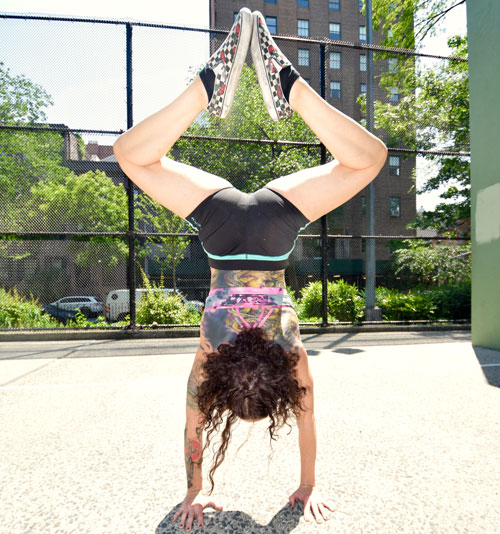
2. The Wrists, Hands and Fingers
While it would seem really obvious as you are putting your entire body weight through, and making fine adjustments with your hands, wrists and fingers, I am still surprised at the number of people who don’t spend enough time looking after these areas. Adequate time must be spent mobilizing and strengthening these areas properly. The most common complaint when working any handbalancing is soreness of the wrists, and though it will certainly take time for your joints, muscles, tendons and ligaments to adjust to the load, you still need to spend time looking after those areas every session.
For me personally, the “first knuckle push-up” is one of the most important drills in my warm up. Having the fingers spread, index fingers pointing straight ahead, shoulders above the wrists and in a kneeling or push-up position, raise the heel of the palm while keeping the knuckles and fingers on the ground, with a 4 second lowering eccentric on each rep for 3 sets of 10-20 reps. And if you have a problem getting good ROM because your knuckles are all banged up from hitting stuff, it can be assisted by using your other hand to anchor or press your fingers and knuckles down whilst you raise the heel of the palm off the floor.
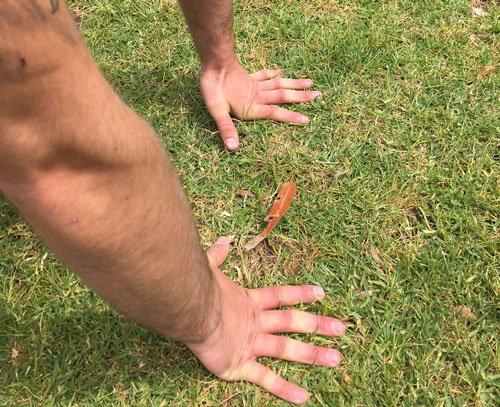
3. Face the Wall
Facing the wall handstands are an absolute necessity if you want to achieve a great handstand. While facing away from the wall also has its advantages, facing the wall helps to achieve a straighter looking handstand and a nicer “line” or shape. About 50 years ago circus performers and strongmen performed mainly “banana back” or arched back handstands, but with the advent of modern gymnastics aesthetics, artistry and scoring criteria, it’s meant that the straight line handstand with the toes pointed is often the preferred method. Try working up to 5 sets of 45s-60s holds thinking about your “shape” or “line”. That usually means hands a few inches from the wall, shoulders open, the rib cage pulled down to a posteriorly rotated pelvis with the chest and hips against the wall.
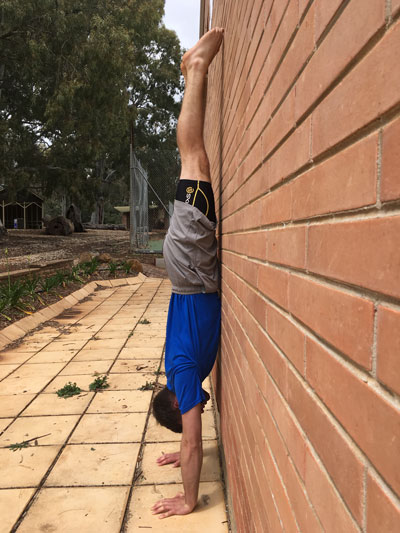
4. Don’t Face the Wall
I am totally going to contradict myself both with this point and the next, but hear me out. One of the few drills that will really help you start to build the strength and motor control required in the hands is the heel pull. This is done facing away from the wall with your hands roughly a foot away. Gently kick up to rest against the wall, then using only your fingers, hands and forearms, pull your entire body off the wall, without using your feet at all. This is the most important point – do not use your feet to push off. Besides getting an amazing pump through the hands and forearms, it will also show you where you are leaking force through your body, and require you to tighten everything up into a straight line.
When done correctly, your entire body will float away from the wall as one unit, and pull you into your handstand. This is a crucial exercise as it teaches you that you cannot use your feet to push against anything when you kick up into a freestanding handstand. The only things that can balance and stabilize you are your fingers, wrists and forearms. It is also exciting as many will feel what it is like to achieve their first handstand and it is crucial for building confidence. Work up to 15-20 sets holding your handstand for as long as possible each time. Once you hit a few handstands like this, you should feel ready to do a freestanding one!
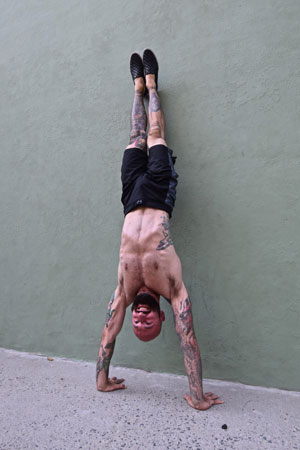
5. Get Off the Wall
Yes, it’s another contradiction, but the wall and its security are also going to be your crux or vice if you don’t get away from it. Right from the beginning, you need to play around with just kicking up into a freestanding handstand. Children usually just play and catch on pretty quick. I know what you are going to say, you aren’t a spring chicken any more. I get it. There is the fear of falling on your head, which is why learning to cartwheel and bail out is really going to help here. The problem with the wall is that it’s there. When people practice against the wall, they usually kick up haphazardly and without any control. The issue with this is that it teaches you the complete opposite of what you need to do when finally kicking up into a freestanding one. When you kick up into a freestanding handstand, it needs to be done softly, gradually, and under control. The problem with a lot of the facing away from the wall handstand work is it teaches the total opposite of this. The wall also becomes a security blanket that people struggle to wean themselves away from. You need to get away from the wall if you ever want to hit your freestanding handstand.
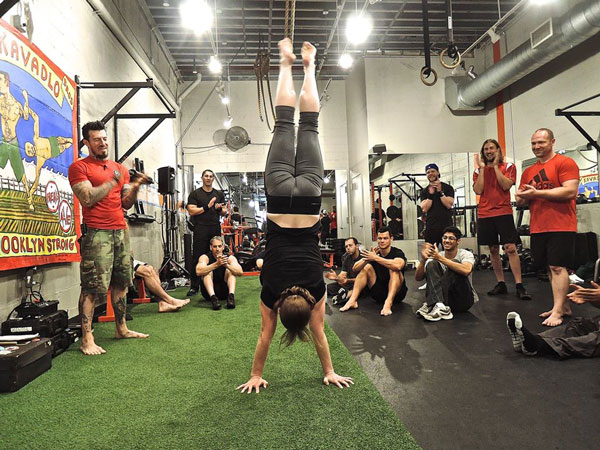
****
Matthew Beecroft is a PCC Team Leader, Senior RKC, and CK-FMS certified instructor. He is also a GFM and Animal Flow instructor and Expert Level 2 instructor with Krav Maga Global and a Muay Thai coach who has trained amateur and professional Muay Thai champions. He can be contacted through his website www.realitysdc.com.au or his Facebook page facebook.com/MeetLifeHeadOn
